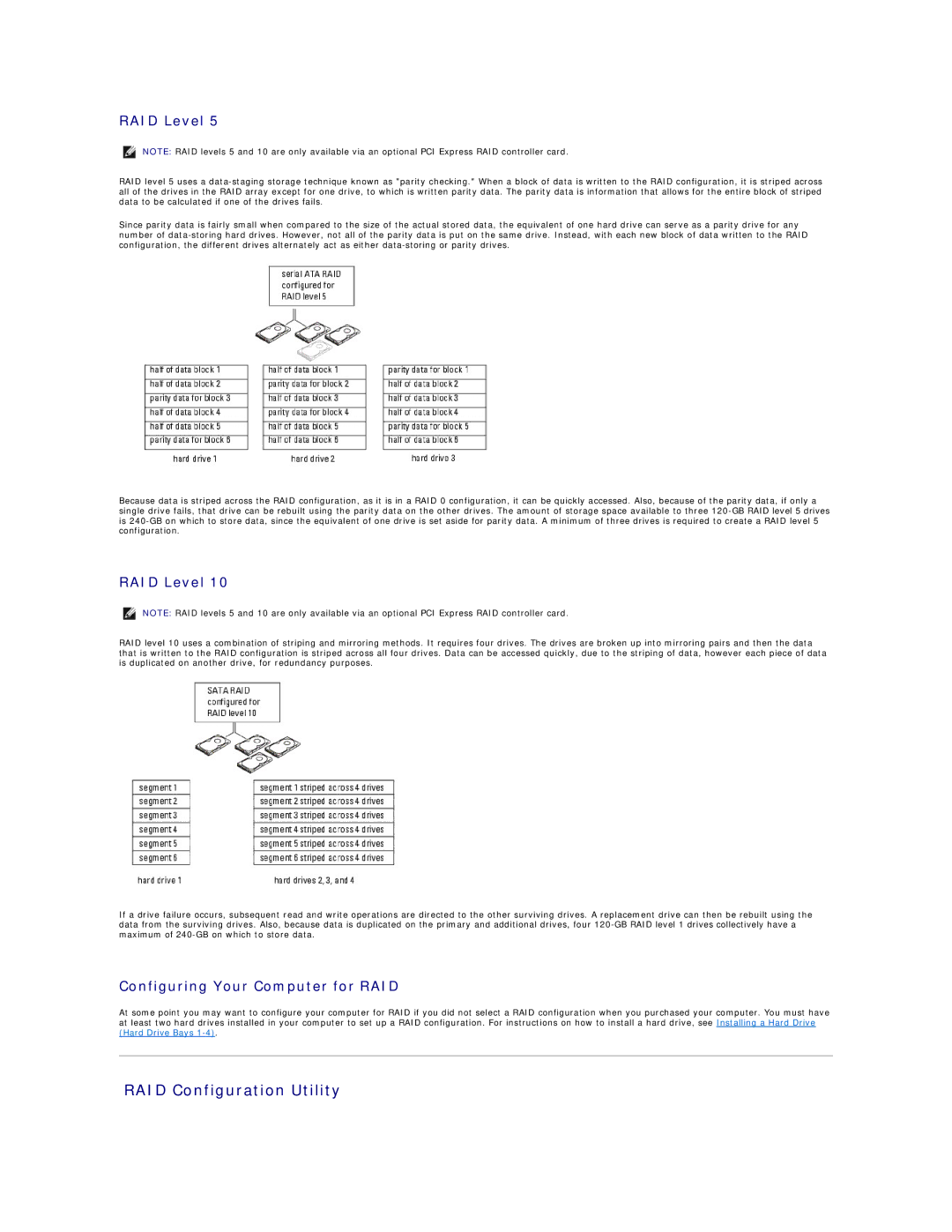
RAID Level 5
NOTE: RAID levels 5 and 10 are only available via an optional PCI Express RAID controller card.
RAID level 5 uses a
Since parity data is fairly small when compared to the size of the actual stored data, the equivalent of one hard drive can serve as a parity drive for any number of
Because data is striped across the RAID configuration, as it is in a RAID 0 configuration, it can be quickly accessed. Also, because of the parity data, if only a single drive fails, that drive can be rebuilt using the parity data on the other drives. The amount of storage space available to three
RAID Level 10
NOTE: RAID levels 5 and 10 are only available via an optional PCI Express RAID controller card.
RAID level 10 uses a combination of striping and mirroring methods. It requires four drives. The drives are broken up into mirroring pairs and then the data that is written to the RAID configuration is striped across all four drives. Data can be accessed quickly, due to the striping of data, however each piece of data is duplicated on another drive, for redundancy purposes.
If a drive failure occurs, subsequent read and write operations are directed to the other surviving drives. A replacement drive can then be rebuilt using the data from the surviving drives. Also, because data is duplicated on the primary and additional drives, four
Configuring Your Computer for RAID
At some point you may want to configure your computer for RAID if you did not select a RAID configuration when you purchased your computer. You must have at least two hard drives installed in your computer to set up a RAID configuration. For instructions on how to install a hard drive, see Installing a Hard Drive (Hard Drive Bays
